|
Texas Earless Lizard
|
- Order: Squamata (scaled reptiles)
- Suborder: Lacertilia (=Sauria) (lizards)
- Family: Iguanidae (iguanid lizards)
- Genus: Cophosaurus (Texas earless
lizards)
|
|
Scientific Name: Cophosaurus
texanus Troschel, 1850 |
| Habitat: Dry washes,
gravelly and rocky areas. |
kophos=deaf and mute," saurus="lizard,"
texanus="of Texas"
|
| Length: To over 7 inches
total. |
|
| Food: Insects. |
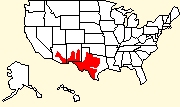 |
|
In the fall of 1996 I visited Big Bend National
Park in western Texas. There I saw many Texas Earless
Lizards. |
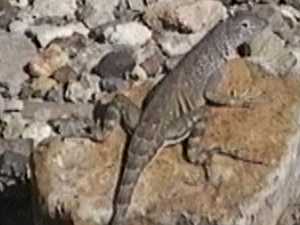 |
| As you can see in this picture,
the tail is being held curled over the back, and waved back and
forth (this image is a still from video I took). These lizards
remain motionless sunning themselves on the rocky desert floor.
When approached by a potential predator, they lift their tails,
revealing the black-and-white striped underside, and wave them
from side to side. This action draws the predators' eyes to the
back of the animal, and this distraction allows the lizard to run
away quickly and freeze a short distance from the original spot,
vanishing against the gravelly background. Since most lizards'
tails are able to regenerate after being broken off, the
brightly-colored tail of the earless lizard is a sacrifice to
spare the animal's life. |
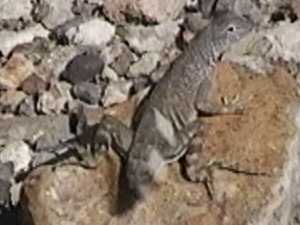 |
| The picture at right is a recent
addition to this page; it is a male I observed in March 2004,
again at Big Bend National Park. Note the beautiful
turquoise markings on the sides! This picture, when viewed
at full size, also shows an intricate pattern of pale pink spots
all over the lizard's back. |
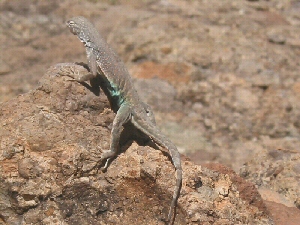 |
| The next two pictures are of an
earless lizard found at Guadalupe Mountains National Park (near
the New Mexico border) in October 2005. |
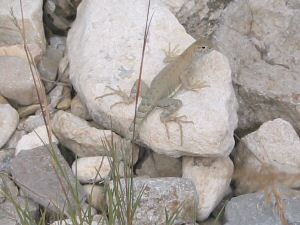 |
|
This individual is most likely a female, judging from the more
muted coloration when compared to the male above. |
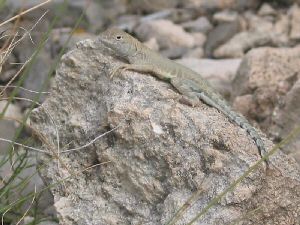 |